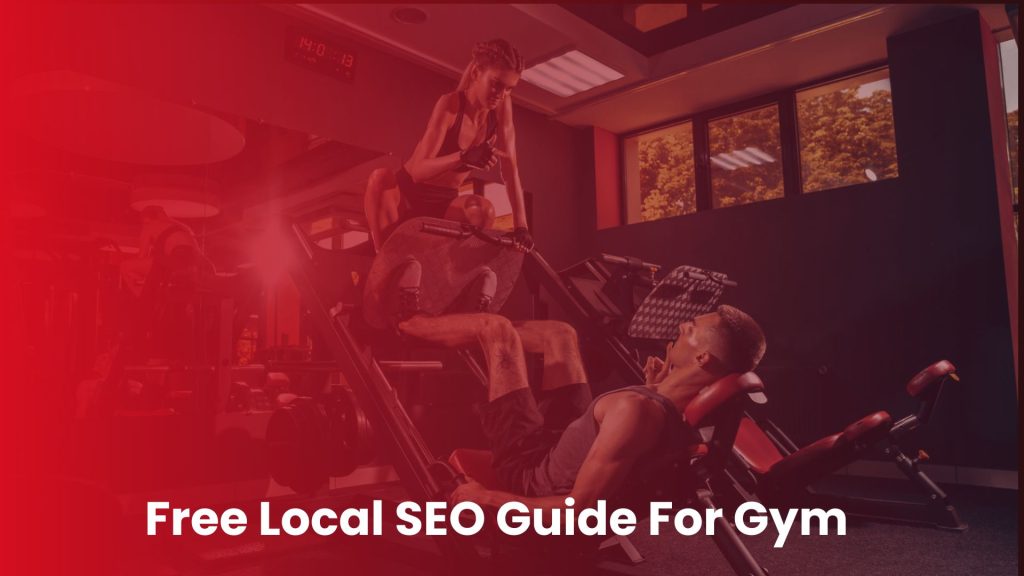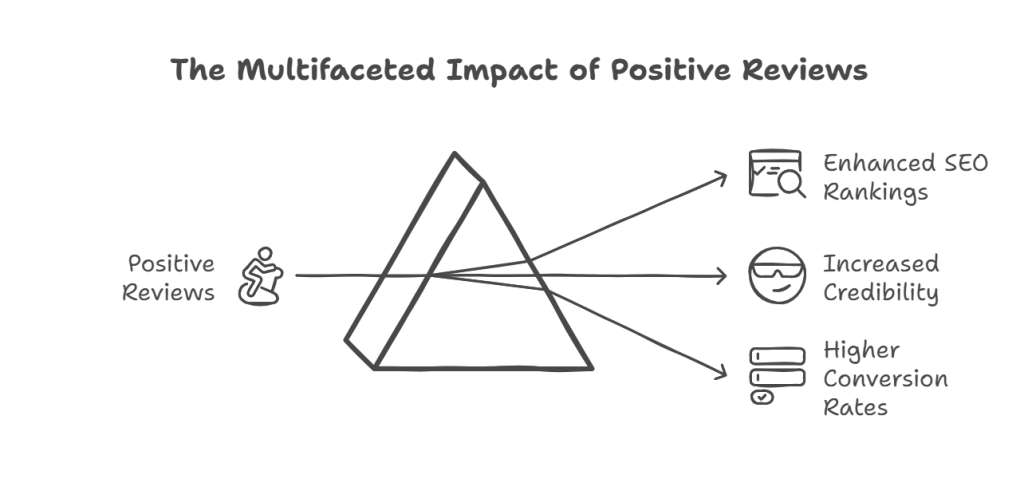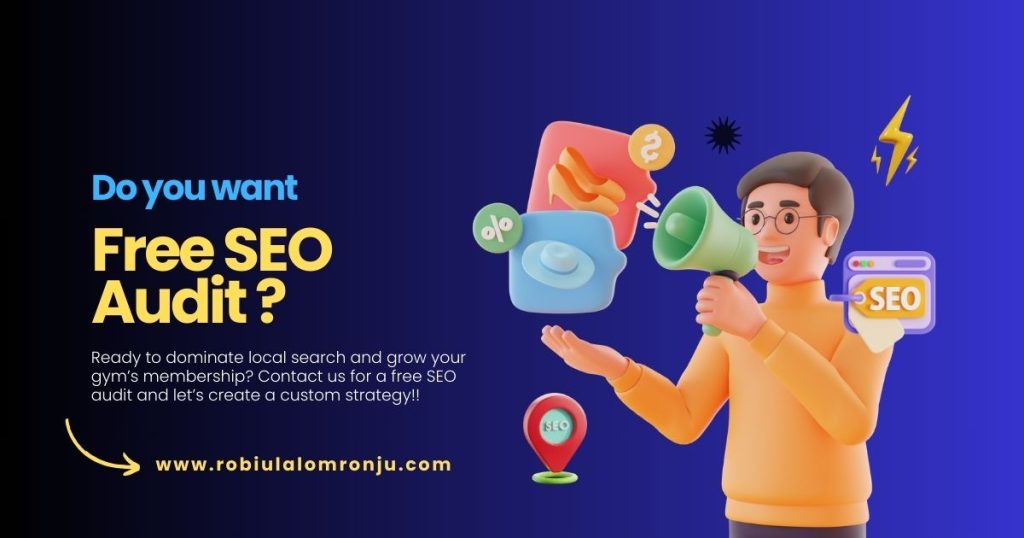
Introduction: Unlock the Power of Local SEO for Your London Gym
Is your gym visible when people in London search for a fitness solution nearby? If not, it’s time to change that!
Local SEO is the key to ensuring your gym appears in local search results when potential clients are looking for fitness solutions nearby. In the highly competitive fitness industry of London, having a strong online presence is crucial. By optimizing your gym’s website and online listings, you ensure that people in your area can easily find you when they search for gyms, fitness classes, or wellness services nearby.
Local SEO is the tool that boosts your gym’s visibility right in the heart of your community. It helps attract more local clients, drives foot traffic to your gym, and ultimately increases your membership base. In a city as large and competitive as London, ensuring your gym is front-and-center in local searches means the difference between growing your business or getting lost in the crowd.
Step 1: Claim and Perfect Your Google My Business Listing
Why GMB is Important:
Your Google My Business (GMB) profile is your gym’s digital storefront. When someone searches for gyms in your area, your GMB listing is often the first thing they’ll see. If your GMB profile is incomplete or inaccurate, it can hurt your chances of showing up in local searches. On the other hand, a fully optimized GMB listing helps you make a positive first impression, builds trust with potential members, and encourages them to choose your gym over the competition. By ensuring that your business information is accurate, up-to-date, and well-presented, you increase the likelihood of turning searchers into new clients.
How to Claim & Optimize Your GMB
- Claim Your Listing: The first step in optimizing your Google My Business (GMB) profile is claiming your gym’s listing. Simply go to the Google My Business website and follow the prompts to claim your business. If your gym already has a listing, verify ownership. If it doesn’t, you can create a new one.
- Complete Your Profile: Once you’ve claimed your listing, it’s crucial to fill out your profile completely. Ensure that your business hours, services, address, and phone number (NAP) are accurate. These details are essential for local SEO and help potential clients find you quickly. Upload high-quality images that showcase your gym, facilities, and classes to create a strong visual appeal. Potential members want to see your space and the services you offer before visiting, so make sure the photos represent the best of your gym.
- The Power of Posts: One of the most underutilized features of Google My Business is the ability to create posts. Regularly updating your GMB profile with posts keeps your gym top-of-mind for people in your local area. Use posts to promote special offers, new classes, upcoming events, or any exciting updates. These posts show up in local search results and on your profile, helping to engage your audience and drive more foot traffic to your gym.
Step 2: Research Hyper-Local Keywords That Speak to Your Audience
Understanding Local Keywords:
Keywords are the backbone of local SEO. When someone searches for terms like “gym near me” or “24-hour gym in East London,” you want your gym to appear at the top of the results. Selecting the right local keywords will help ensure that your gym ranks higher in relevant searches, driving more local traffic and potential members to your website.
How to Find Your Golden Keywords:
- Keyword Tools: To uncover the best hyper-local keywords, start with tools like Google Keyword Planner or Ahrefs. These platforms allow you to explore keyword ideas and assess search volume in your specific area. Focus on long-tail keywords like “best gym in Shoreditch” or “affordable fitness classes in South London,” as they often have lower competition and higher conversion potential.
- Competitor Analysis: Look at what local competitors are doing to identify the keywords they’re targeting. Check out their websites, blog posts, and social media profiles to gather insights. This can give you a competitive advantage and help you understand which terms are resonating with your local audience. You can even use tools like Ahrefs to analyze competitors’ backlink profiles and ranking keywords.
Integrating Keywords Naturally: Once you’ve discovered your ideal local keywords, it’s time to weave them into your website’s content. Use them in your homepage copy, blog posts, service descriptions, and meta tags (title tags and meta descriptions). Remember to keep the flow natural and avoid keyword stuffing, which can hurt your rankings. Your goal is to make the content valuable to your audience while also optimizing it for search engines.
Step 3: Optimize Your Gym’s Website to Attract Local Clients
Build Localized Content That Speaks to Your Community:
Creating content that resonates with your local community is key to attracting the right clients. Develop dedicated pages on your website that target specific neighborhoods or services. For example, a page titled “Yoga Classes in North London” or “Weight Loss Gym in Central London” helps your gym show up in searches for those particular areas. This approach not only helps with local SEO but also ensures potential clients see your gym as part of their community.
Mobile Optimization is a Must:
With more people accessing websites via smartphones, a mobile-friendly website is essential. Google also prioritizes mobile-optimized websites in its rankings, making this step critical for local SEO. Ensure your website is responsive, meaning it adapts seamlessly to any screen size, providing an excellent browsing experience on both desktops and mobile devices. If your site isn’t optimized for mobile, you’re likely losing out on potential members who are browsing on the go.
Speed and Simplicity Matter:
In today’s fast-paced world, website speed is critical. A slow-loading site can lead to high bounce rates, meaning visitors will leave before exploring your services. Make sure your website loads quickly by optimizing images, using a reliable hosting service, and reducing unnecessary elements. Additionally, focus on simplicity and usability. A clean, intuitive website with clear navigation helps visitors easily find what they’re looking for, whether it’s class schedules, gym membership details, or contact information. A seamless, user-friendly experience encourages potential clients to stay longer and engage with your content, ultimately converting them into new members.
Step 4: Build a Strong Reputation with Reviews
 Why Reviews Matter:
Why Reviews Matter:
Positive reviews are one of the most powerful trust signals you can have online. Not only do they help improve your local SEO rankings by indicating to Google that your gym is trustworthy and relevant, but they also build your gym’s credibility with potential clients. When prospective members see that others have had great experiences at your gym, they’re more likely to trust you and take the next step in signing up.
Encourage Happy Clients to Leave Reviews:
The best way to gather reviews is by simply asking satisfied clients. After a class or personal training session, encourage your clients to leave a review on your Google My Business listing and other popular review platforms such as Yelp and Trustpilot. A thoughtful follow-up email or message is an effective way to remind them, but make sure it’s polite and easy for them to leave feedback. Offer a gentle request, such as: “If you enjoyed your class today, we’d love to hear about your experience. Please consider leaving us a review on Google!”
Responding to Reviews:
Responding to reviews, whether they’re positive or negative, is just as important as getting them in the first place. Acknowledge and thank clients for their positive feedback, showing appreciation for their time and support. For negative reviews, approach with empathy and professionalism. Address concerns with constructive solutions and a willingness to make improvements. By responding thoughtfully, you not only demonstrate that you value your clients’ opinions but also create a positive impression for others who may read your responses. This builds a strong reputation of attentiveness, reliability, and care.
Step 5: Get Listed in Local Directories & Niche-Specific Platforms
What Are Citations and Why They Matter:
Citations refer to any mention of your gym’s name, address, and phone number (NAP) on other websites and directories, even if they don’t contain a direct link to your site. These citations are crucial for local SEO because they help search engines like Google verify the legitimacy and accuracy of your business information. The more consistent and accurate your NAP details are across the web, the more trustworthy your gym appears to search engines, which can improve your rankings in local searches.
List Your Gym on Popular Directories:
Getting your gym listed on popular local directories is essential for increasing its visibility. Platforms like Yelp, Yell, and fitness-specific directories like Gym Finder are excellent places to start. These directories not only provide potential clients with easy access to your gym’s information but also boost your online presence by improving your chances of appearing in local search results. Make sure to claim and optimize your listings on these platforms to ensure they’re up-to-date and complete.
Ensure Consistency Across the Web:
Consistency is key when it comes to citations. Ensure that your business information (NAP) is exactly the same on every directory and platform where it appears. This includes being consistent with abbreviations (e.g., “St” vs. “Street”) and phone number formatting. Any discrepancies between directories can confuse search engines and negatively impact your local SEO efforts. Double-check and update your information regularly to ensure everything matches across the web, building trust with both search engines and prospective clients.
Step 6: Earn Local Backlinks to Boost Your Gym’s Authority
What Are Backlinks and How Do They Affect Local SEO?: Backlinks are links from other websites pointing to yours. They are important because they signal authority to Google, helping improve your rankings. Local backlinks from reputable websites in your area are especially valuable.
How to Build Local Backlinks:
- Sponsor Local Events: By sponsoring or participating in local events, you can earn backlinks from event websites, boosting your SEO.
- Collaborate with Local Influencers and Bloggers: Work with local fitness influencers or bloggers to get featured on their websites with backlinks to your gym.
- Get Featured in Local Publications: Share your gym’s success stories or expert insights with local news outlets, fitness magazines, or blogs for backlink opportunities.
Step 7: Engage Your Local Audience with Relevant Content
Create Content That Resonates with Londoners:
Crafting content that reflects the interests and needs of your local community is a powerful way to attract new members. Create blog posts, videos, and guides focused on the lifestyle and fitness culture in London. For example, write articles like “Best Gyms for Busy Professionals in London” or “Top Fitness Classes in [Neighborhood]” to address the specific needs of people living and working in the area. Content that speaks to the unique challenges and interests of your audience makes your gym feel more personal and relatable, increasing your chances of attracting local clients.
Incorporate Local Landmarks and Events:
Make your gym’s content more relevant by tying it to local landmarks, events, and activities. For example, write blog posts or create videos about the London Marathon, local charity runs, or fitness expos in the city. You can even feature nearby parks or famous locations where people can enjoy outdoor workouts. This type of content not only appeals to local audiences but also boosts your local SEO by showing search engines that your gym is actively engaged in the community.
Maximize Social Media for Local Engagement:
Social media platforms like Instagram, Facebook, and YouTube are great tools for connecting with your local audience. Use geo-targeted ads to promote your gym’s offerings to users in specific London neighborhoods. Additionally, create location-specific content that resonates with people in your area. For example, share local success stories, behind-the-scenes looks at your gym, or highlight local fitness events. Engaging with local fitness communities on social media—whether through comments, shares, or collaborations—further boosts your visibility and helps establish your gym as a local authority in fitness.
Step 8: Track Your Local SEO Success with the Right Tools
Key Metrics to Track:
To ensure your Local SEO strategy is working, it’s essential to monitor the right metrics. Focus on tracking:
- Search Rankings: Keep an eye on how your gym ranks for local keywords, especially those related to London.
- Website Traffic from Local Areas: Look at traffic data specifically from London or nearby areas to see if local clients are finding your website.
- Membership Growth: Monitor how your membership numbers are growing as a result of increased visibility from your Local SEO efforts.
Tools to Help You Track Progress:
- Google Analytics: Use this tool to track website traffic, including visitors from specific geographic locations.
- Google Search Console: Monitor your search performance and see which keywords are driving local traffic to your website.
- Ahrefs: This tool helps track backlinks and keyword rankings, providing insights into your SEO efforts and helping you improve your strategy.
Interpreting the Data:
Once you gather data from these tools, analyze it to understand how well your Local SEO is working. Look for trends in search rankings, traffic, and membership growth. If certain areas are performing better, focus your efforts there. Use this data to refine your SEO strategy and make data-driven adjustments that will help you reach even more local clients in the future.
Conclusion: Take Action and Transform Your Gym’s Local SEO
By following these actionable steps, you’ll be well on your way to enhancing your gym’s online visibility and attracting more local clients. From claiming and optimizing your Google My Business listing to earning valuable local backlinks, each step plays a vital role in building a strong Local SEO foundation. This strategy will not only boost your gym’s rankings but also drive foot traffic and increase membership, ensuring you stand out in the competitive London fitness market.
 Ready to dominate local search and grow your gym’s membership? Contact us for a free SEO audit and let’s create a custom strategy!!
Ready to dominate local search and grow your gym’s membership? Contact us for a free SEO audit and let’s create a custom strategy!!
👉 Free SEO Audit creates a custom strategy for you.
Frequently Asked Questions (FAQ)
What is Local SEO, and why is it important for my gym in London?
Local SEO helps your gym rank higher in local search results, making it easier for potential clients in London to find your business when searching for fitness solutions nearby. It’s crucial for driving foot traffic, increasing membership, and standing out in a competitive market.
How long does it take to see results from Local SEO efforts?
SEO is a long-term strategy, and while some improvements may be noticed within a few months, it can take up to 6-12 months to see significant changes in rankings and membership growth. Patience and consistency are key to success.
Can I manage Local SEO for my gym on my own, or do I need a professional?
While it’s possible to manage Local SEO on your own, working with a professional can help you save time and implement advanced strategies more effectively. Experts ensure that every aspect of your Local SEO, from Google My Business to backlink building, is optimized for the best results.
What role do online reviews play in Local SEO for gyms?
Online reviews are crucial for Local SEO as they improve your gym’s credibility and help boost your rankings in local search results. Positive reviews build trust with potential clients, and responding to them shows that you value feedback and customer satisfaction.
How can I track the success of my Local SEO strategy?
You can track your Local SEO success using tools like Google Analytics, Google Search Console, and Ahrefs. These tools will help you monitor key metrics like website traffic, keyword rankings, and backlink performance, allowing you to adjust your strategy as needed to improve results.


